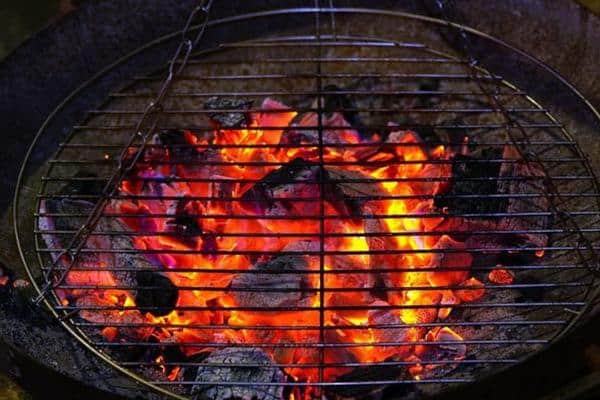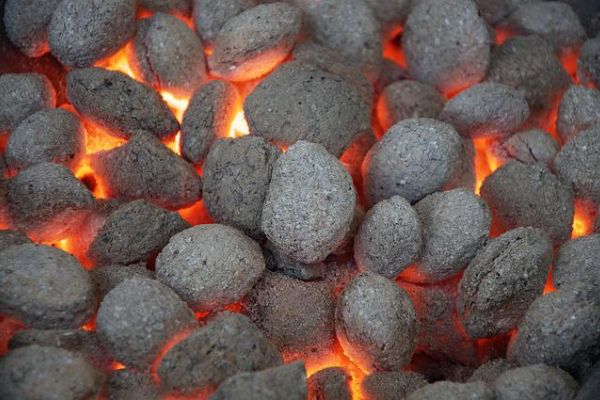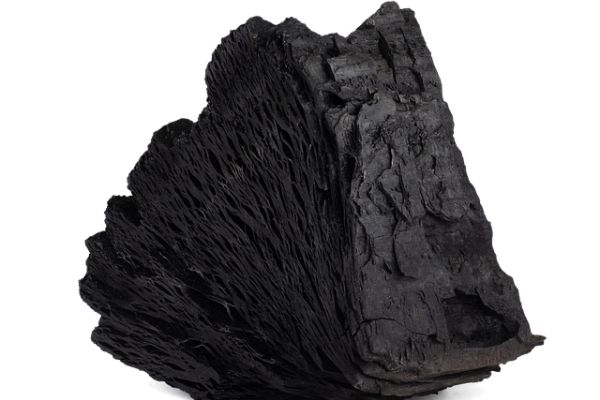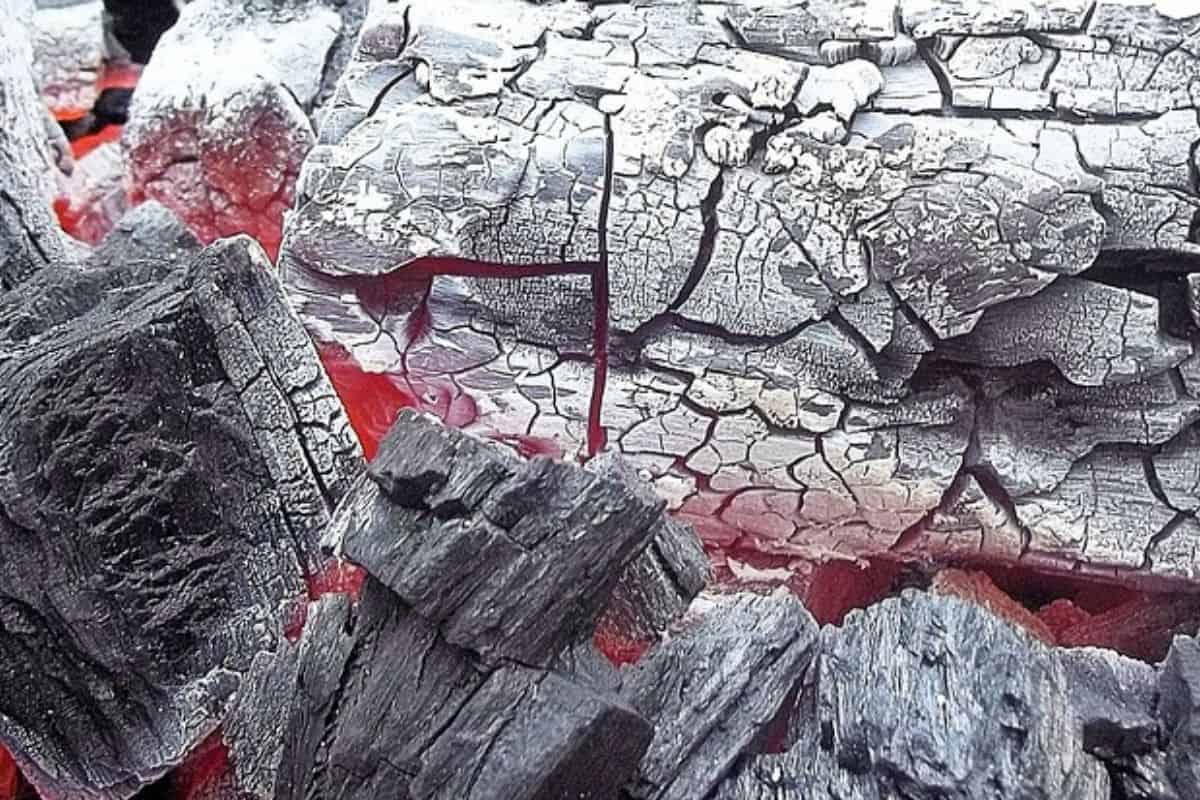This page may contain affiliate links. If you click and buy, we might get a small commission at no cost to you.
Some of us live by the art of grilling. Some prefer a nice gas grill; others, however, swear that charcoal is king. One of the main drawbacks to charcoal for me has always been disposing of the ashes after you grill. In this article, I thought I’d share some tips for what to do with charcoal after grilling.
Whether you’re team charcoal or team gas, you’ll likely agree that grilling creates an unbeatable meal without the fuss of your kitchen. If you prefer the taste of charcoal over gas, you know there’s a bit more involved.
What To Do With Charcoal After Grilling

One of the simplest and safest ways to do this is to place the used ash and charcoal in a metal container, douse it with water, and set it far away from your home or anything combustible.
You should also generally wait 48 hours after grilling to be sure the coals have completely cooled. Some waste management services recommend waiting even longer to ensure the product is completely cooled.
Disposing of charcoal after use depends on the type you use, and sometimes your local waste management service. Before disposing of any type of charcoal, you must make sure it’s cool. This goes for natural hardwoods, coconut, and briquettes.
Yes, you can be green with your charcoal waste if you use hardwood or natural charcoal! Small amounts of wood ash are acceptable in your compost bin. If your soil is too acidic for certain plants, adding wood ash may raise the pH. Due to its inorganic content and the addition of accelerants, this type is not suitable for your compost pile or garden.
It’s not uncommon to have fairly large pieces of charcoal remain after you’re done grilling. If you have larger pieces of charcoal left over from grilling, you may be able to reuse them in your grill. Remove excess ash, separating usable charcoal out by raking. Next time you grill, add new charcoal to the used — approximately half of what you normally use.
Other uses include saving ashes and charcoal bits for the winter; sprinkling ash in front of or behind your tires may give you enough traction if you get stuck on ice!
More tips
Don’t forget to let it sit
Let the charcoal sit for 48 hours after grilling until the coals have completely gone out.
Throw in garbage
It’s often recommended that you wrap ashes in aluminum foil even after cooling as an added precaution. A metal container would also be suitable, be sure to put them in an outside garbage bin.
Use as a fertilizer
Wood charcoal can be turned into a potassium-rich fertilizer for plants.
Deter pests
Using a mixture of wood ash and water or lime you can make a powerful pest deterrent that protects your garden from beetles and other insects.
Disinfecting and cleaning
Wood ash can be used to make lye soap as well as for a variety of other things including de-skunking a dog and cleaning silver.
Natural charcoal disposal
If you’re using all-natural charcoal, you don’t have to worry too much about disposal once it’s cooled. Without the inorganic materials, you can safely place the ash and charcoal bits safely in the trash.
Briquette disposal
Briquettes require more care during disposal than natural charcoal. Once it is cooled and there’s no danger of fire, wrap the used charcoal and ash in foil, then place it in your trash bin.
Types of Charcoal
If you’re a novice charcoal grill user, you may be surprised at the several different types of charcoal. It’s not a one-size-fits-all category!
Hardwood, hardwood lump, briquettes, ready-light briquettes, and coconut-shell charcoal are all different types of charcoal available in mass for grill enthusiasts.
Briquettes

This is the type of charcoal that probably comes to mind. Small, compressed, evenly sized pieces make up the contents of the bag.
What you may not realize is that charcoal briquettes start out naturally as sawdust. To get that consistent size and burn, manufacturers add binders, fillers, and occasionally accelerants.
Briquettes provide a consistently even and slow burn, making them ideal for long grilling sessions or food that requires longer cook times. Briquettes are relatively easy to light in a charcoal chimney or with accelerants. If the charcoal contains a pre-added accelerant, you just have to light the match!
Hardwood Lump Charcoal

Both hardwood and hardwood lump is the most readily available forms of natural charcoal for the grill. You’ll find hardwood lumps more often. When you open the bag, you’ll notice irregularly shaped pieces of black wood.
Hardwood lump charcoal is just that: Hardwood. You won’t find fillers, binders, or added chemicals. Hardwood lump is a little more difficult to manage due to its irregular sizes and shapes, but it offers a huge advantage for some types of food.
Hardwood burns at a higher heat and more quickly than charcoal briquettes. The type of wood will impart different tastes to your food from the smoke, allowing you to have food that almost tastes as if it came from a smoker, not a simple grill.
Lesser-Known Types of Charcoal
Have you ever heard of coconut shell charcoal or binchotan? If not, you’re not alone. These types of charcoal are more popular throughout parts of Asia. Coconut shell charcoal is coconut husks. This naturally occurring material burns slowly and at a high temperature. It’s the charcoal of choice for many state grills!
Binchotan is almost the same as hardwood lump, although it comes in longer, branch-like pieces. This traditional Japanese charcoal is made from a special oak tree that grows in southwestern Japan. It burns slowly and cleanly, imparting no charcoal flavor to the dish you’re grilling. Warning: binchotan is particularly expensive and takes a long time to light. It’s not for everyone!
Conclusion
Disposing of used charcoal doesn’t require special materials, but it can require a small amount of time. The most important factor is ensuring the charcoal is completely cooled and not a fire risk. Dousing with water, then stirring, is a faster way to cool the ashes. The ashes may remain hot for numerous days — dousing with water prevents accidental fires.



